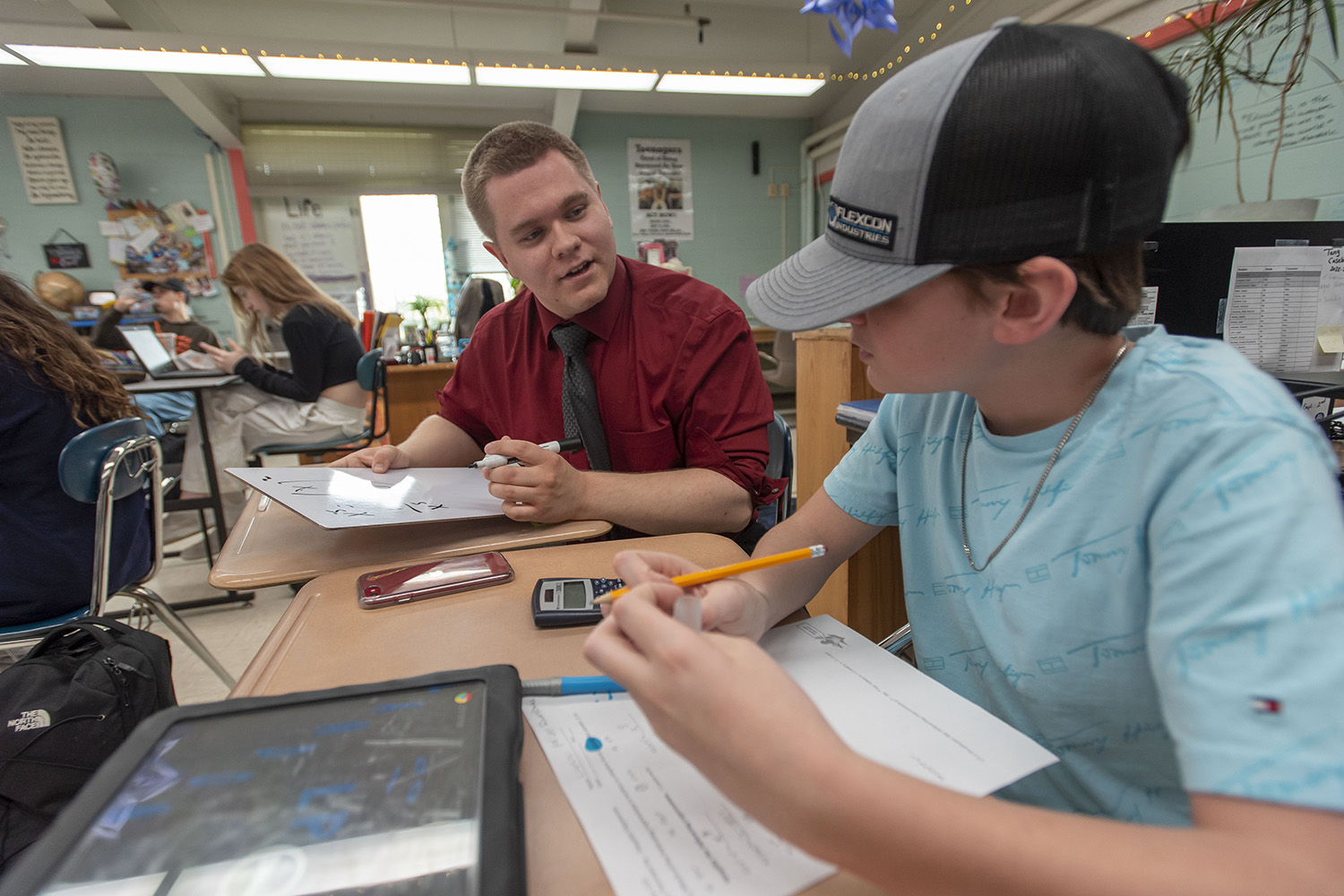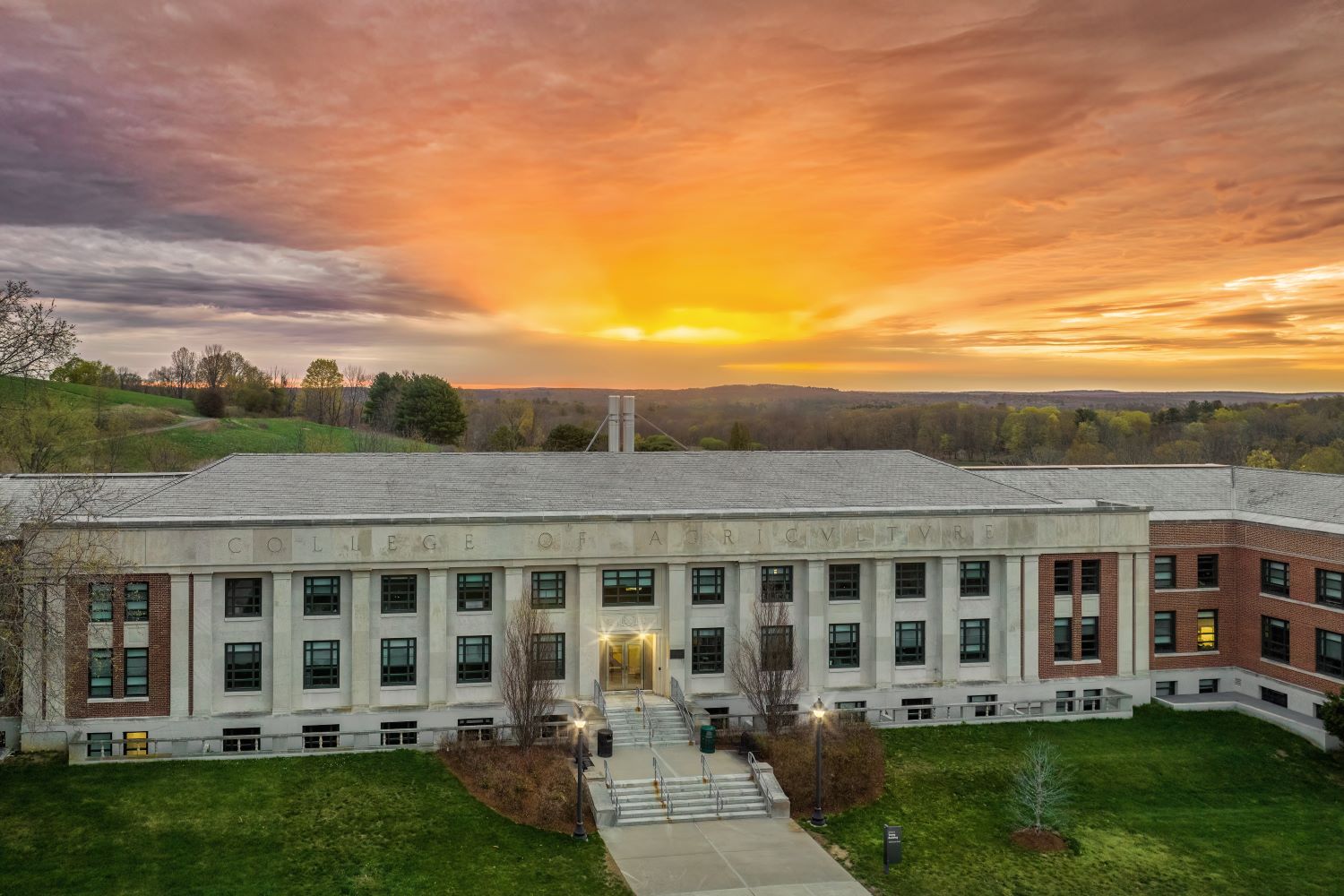Twice a year, we shift our clocks and watches by an hour for Daylight Savings Time: forward in the spring and back in the fall. This year’s Daylight Savings Time begins in the wee hours of Sunday, March 12. But a more ancient method of keeping time, the sundial, which tells the time of day by the apparent position of the Sun in the sky and the shadow it casts, makes no such distinction.
At the heart of the Storrs campus, between the Rowe Center for Undergraduate Education and the Charles B. Gentry Building, home to the Neag School of Education, the Waugh sundial has been marking the passage of time for generations of UConn students, staff, and faculty.
It is named for Albert E. Waugh, a professor of agricultural economics, who served as head of the economics department, dean of the College of Arts and Sciences, and provost from 1950 until his retirement in 1966. He had a keen interest in sundials, and wrote a book about them, Sundials: Their Theory and Construction, that was published posthumously in 1973.
Waugh was also responsible for construction of the UConn Planetarium on North Eagleville Road in 1954. It is the oldest planetarium in Connecticut.


